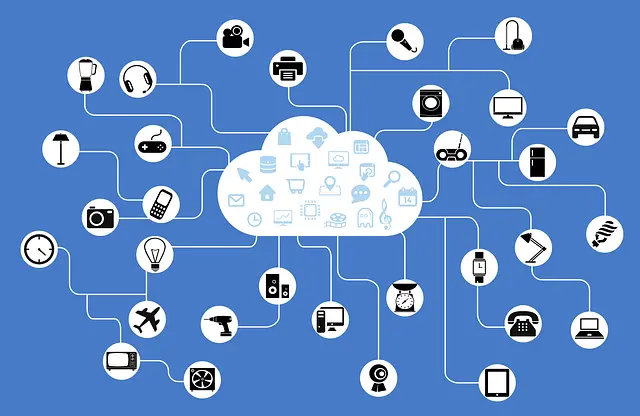In the past, if someone said they received medical check-ups and their medicines without leaving their home, it was hard to believe. Well thanks to the application of computer in pharmacy, this is now the norm.
The integration of computers into pharmacy has opened new doors for improving patient care, advanced data handling and much more.
In this article, we’ll learn how the healthcare domain has grown by the application of computer in pharmacy and what changes have computers brought in pharmacy. Let’s begin.
Application Of Computer In Pharmacy
Here are the 10 application of computer in pharmacy –
- Electronic Health Records (EHR)
- Telepharmacy
- Faster Prescriptions
- Mobile Pharmacy Applications
- Automated Dispensing
- Drug Information Records
- Automated Billing And Labeling
- Barcode Drug Administration
- Pharmacy Inventory Control
- Research and Development
Let’s discuss each of them –
Electronic Health Records (EHR)
An important application of computer in pharmacy is the introduction of electronic health records. EHR has changed how pharmacists manage patient’s information and collaborate with other healthcare providers.
EHR systems are the digital versions of patient’s paper charts which store patient’s medical histories, diagnoses, prescriptions, treatment plans, dates of immunizations, allergies, radiological pictures, and laboratory test results.
Pharmacists can electronically review and update medicine orders, and monitor patient responses to treatment, improving communication and coordination.
Telepharmacy
Telepharmacy is a modern application of computer in pharmacy that allows pharmacists to provide pharmaceutical care and services remotely, using telecommunications and digital platforms.
For example – patients in a small rural area without a local pharmacy can now easily get virtual consultations and prescriptions with the help of Telepharmacy.
Patients can connect with their pharmacist and doctors through video conferencing, phone calls, or messaging platforms to discuss their medication needs, receive help on proper medication use, etc.
Faster Prescriptions
In today’s digital age, computer systems have completely changed how prescriptions are processed, removing the need for handwritten prescriptions and greatly reducing the time it takes to fill.
When a doctor submits an electronic prescription directly to the pharmacy, it arrives instantly in the pharmacy’s computer system, where it can be reviewed, verified, and filled accordingly.
By eliminating the need for manual data entry and paper-based prescriptions, electronic prescriptions reduce the risk of errors and are a great application of computer in pharmacy.
Mobile Pharmacy Applications
Mobile pharmacy applications are a modern and convenient way for patients to manage their medicines and engage with pharmacy services using their smartphones or tablets.
Through these applications, patients can set personalized medication reminders to ensure they never miss a dose, request prescription refills, and can communicate directly with the pharmacists whenever required.
The application of computer in pharmacy has also led to the development of mobile pharmacy applications, for example –
- Walgreens – The Walgreens app allows users to refill prescriptions, set medication reminders, and access their prescription history.
- MyTherapy – A medication reminder and health tracker app that helps users manage their medications and track their health progress.
- Netmeds – The Netmeds app allows users to easily order medicines, track their orders, and access healthcare information.
- PharmEasy – An online pharmacy and healthcare platform app just like Netmeds.
- Medlife – The Medlife app allows users to order medicines, book lab tests, and consult with doctors from their homes.
- Apollo Pharmacy – One of the leading pharmacy chains in India, which offers a wide range of medicines, healthcare products, and services.
Automated Dispensing
Automated dispensing is a significant application of computer in pharmacy, changing the medication dispensing process and enhancing efficiency and accuracy.
Automated dispensing systems consist of computerized cabinets or machines that store a wide range of medications securely.
Each medication is assigned a specific location within the system, where pharmacists can easily access the medications they need by providing patient information or scanning barcodes.
In emergency situations, every second counts, and patients need quick access to life-saving medicines. Automated dispensing cabinets located within the emergency department allow healthcare providers to quickly obtain and give medicines to patients in need.
Drug Information Records
Drug information records is a prime example of application of computer in pharmacy and how computer technology is changing pharmacy practices.
These records allow pharmacists to efficiently organize and manage extensive databases containing crucial drug-related information, such as dosage guidelines and potential side effects.
Drug information records can even predict potential drug interactions and offer personalized recommendations, thereby optimizing patient care.
Drug information records serve as invaluable tools in modern pharmacy, showcasing the powerful synergy between technology and healthcare to improve outcomes for patients.
Automated Billing And Labeling
Automated billing and labeling is a pivotal application of computer in pharmacy domain.
Automated billing simplifies the payment process for patients by eliminating manual calculations and reducing the likelihood of errors.
With the integration of computer systems, pharmacies can efficiently generate invoices, apply discounts, verify insurance coverage, and comply with regulatory standards and policies.
Barcode Drug Administration
Barcode drug administration is a smart application of computer in pharmacy and other care facilities.
A unique barcode with the medicine name, dose, and expiration date printed on it is attached to every medication label.
Healthcare providers scan the patient’s identification wristband with barcodes using a barcode scanner. Similarly they scan the barcode on the medication.
Once both the patient and medication have been verified, the administration is documented electronically in the patient’s record. This creates a digital trail of medication administration, improving patient safety, accuracy and accountability.
Pharmacy Inventory Control
Pharmacy inventory control is a also an important application of computer in pharmacy. It involves tracking and managing the inventory of medicines and other pharmaceutical products to ensure adequate supply, minimize waste, and optimize cost-effectiveness.
Computer systems track the quantities of medications and products in stock in real-time. This allows pharmacists to monitor inventory levels continuously and reorder items as needed to prevent stock outs or overstock situations.
Pharmacy inventory control systems also generate reports and analytics to help pharmacists make decisions about purchasing, stocking, and managing inventory levels.
Research and Development
The application of computer in pharmacy Research and Development has significantly transformed the drug discovery and development process.
Through computer-aided drug design (CADD), researchers can predict the benefit and safety of new compounds, accelerating the drug discovery process.
Virtual screening algorithms efficiently identify promising lead compounds from large chemical libraries, streamlining the initial stages of drug development.
Computer simulations are used in clinical trial design to optimize trial parameters, resulting in more dependable and effective investigations.
Conclusion
The integration of computer technology in pharmacy has revolutionized the field, enhancing efficiency, accuracy, and innovation across various aspects of pharmaceutical practice. From streamlining medication management and inventory control to accelerating drug discovery and development, each application of computer in pharmacy plays a pivotal role. With ongoing advancements in technology, the future promises even greater opportunities for improving patient care, optimizing drug therapies, and advancing healthcare outcomes.
Also Read :





